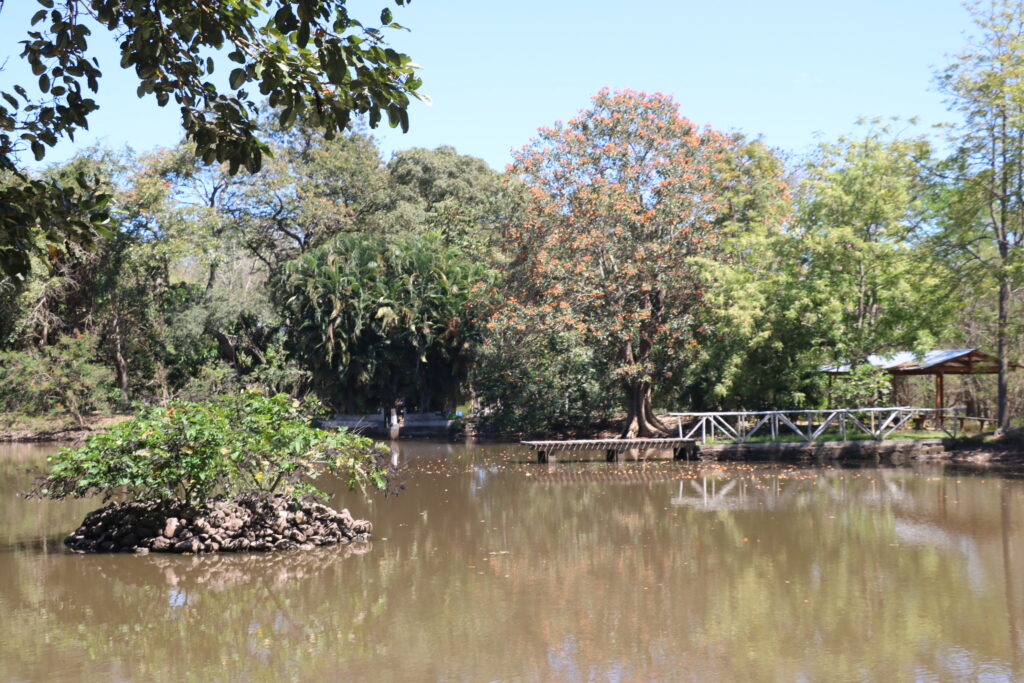La Soledad Experimental Station: A Gem in the Dry Forest of Comayagua
Comayagua, Honduras – Located just 6 kilometers from the city of Comayagua, in the «Voluntades Unidas» community on the road leading to the El Taladro village, you’ll find the La Soledad Experimental Station.
The experimental center covers 83 hectares of tropical dry forest, with a rich variety of tree species, including some that are endangered, such as Guayacán, Montaña Cedar, Cactus, Leucaena, and Bouberria.

With the purpose of researching and conserving native species in danger of extinction within the dry forest, La Soledad Station was founded in 1987 with funding from the governments of Honduras and Great Britain. However, starting in January 2007, it came under the administration of the National University of Forestry Sciences (UNACIFOR).
The experimental center features a relatively flat topography at an altitude of 640 meters above sea level (masl) and an average temperature of 24 degrees Celsius. It offers services such as trail interpretation, guided tours, and the sale of timber, fruit, and ornamental plants.

In terms of wildlife, the experimental station is home to various species, including white-tailed deer, raccoons, brown rats, opossums, snakes, iguanas, and 36 species of birds from the dry ecosystems of the country.
Visitors can also enjoy fully wooded paths and trails that allow them to connect with nature, making them feel like they are in a true earthly paradise. The advantage is that this natural wonder is just a few minutes away from the city of Comayagua and Palmerola International Airport.
According to Engineer Ernesto Guillén, in charge of the experimental station, the center houses a variety of native and exotic species with genetic bases and informational records regarding their behavior in various conditions. It serves as an academic setting for university students.

«University students can carry out modular practices, and some of them can conduct their undergraduate and postgraduate theses. It’s an educational-focused environment, and educational institutions bring their student populations to appreciate nature and develop ecological environmental criteria,» he affirmed.
Guillen added that the experimental station also maintains a tourism aspect, allowing national and international visitors to enjoy the center’s flora and fauna, along with its beautiful trails and landscapes, including a lovely lagoon where tourists can relax and enjoy a great family outing.

«We are enhancing the center through partnerships with institutions like the National Chamber of Tourism of Honduras (CANATURH), which is a national office aimed at maximizing these capacities to strengthen it,» he argued.
Furthermore, the center’s head mentioned that the station has seeds available in the UNACIFOR seed bank, which are ready to be marketed nationally and internationally.
«There are several things we need to develop in equal measure as the university grows. Naturally, it’s a resource for the population, and we have rural communities around it that value this resource. We want to establish relationships with different local governments in the area to involve them in the process,» he emphasized.

Fidel Alvarado, a teaching researcher at UNACIFOR, mentioned that they, along with students, measure parameters such as diameter and height to assess the growth behavior of the species in the station. They also conduct other classes related to ecology, agriculture, the environment, soil, and protected areas at this station, which is a gem within the Comayagua Valley’s dry forest among the various stations we have throughout the country.
In this regard, Alvarado noted that the experimental station serves a multitude of purposes, especially for UNACIFOR, as applied forest research is a center that contributes to the country’s development in the field of forestry, promoting the academic training of students in various forestry and postgraduate programs.

To conclude, the professor mentioned that through student and faculty exchange programs with other universities worldwide, the experimental center has been visited by students from Mexico, Ecuador, the Dominican Republic, Haiti, and Africa. They are awaiting the signing of more agreements to welcome professors and students from South America and Spain.

The La Soledad Experimental Station is open to the public from Monday to Friday, from 8:00 AM to 4:00 PM, and on Saturdays and Sundays, from 9:00 AM to 4:00 PM, at an affordable price for visitors, making it an economical family outing. – Marlon Laguna Salgado.

If you found this article enjoyable, you can support us with a donation of your choosing, according to your means, through the following link for the maintenance of the digital newspaper El Palmerola Online.Com, the News Radar. Thank you very much for your valuable contribution.
For donation: https://ko-fi.com/elpalmerolaonline














